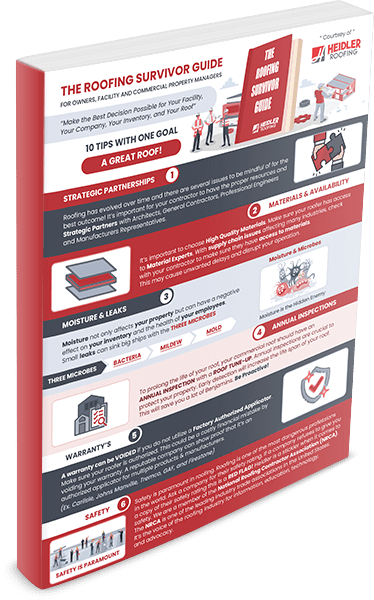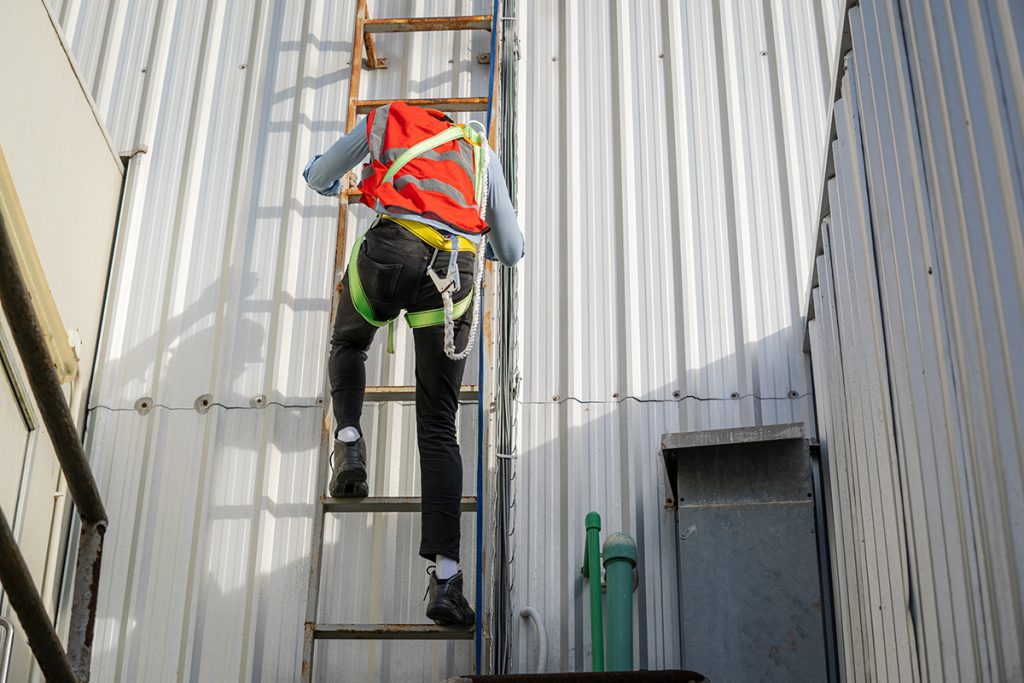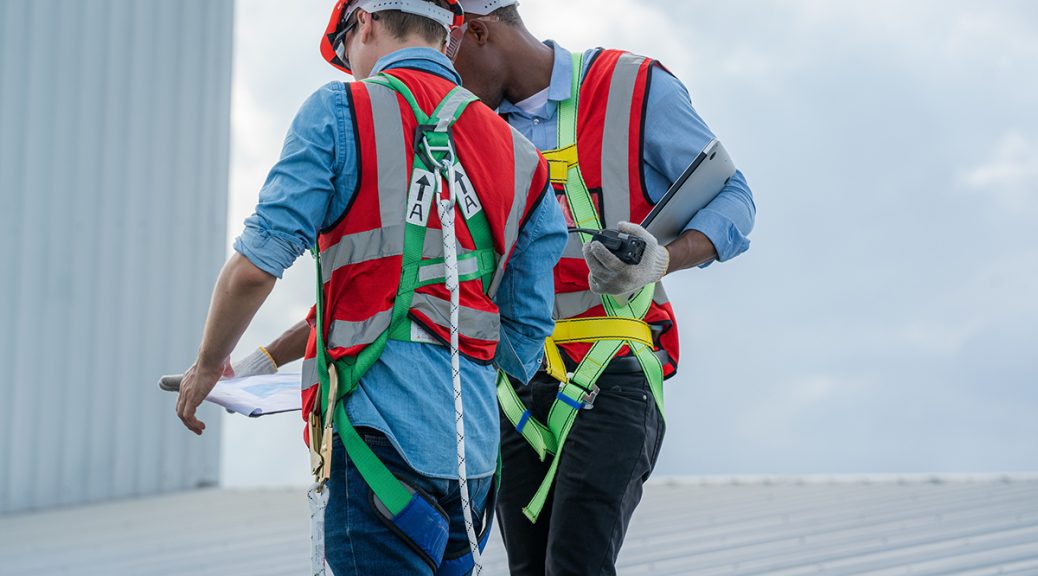
When you own a commercial building, you have a large-scale investment to take care of. Commercial building owners might stress over the public safety requirements, damage avoidance, and long-term building health that your structure demands. This stress can cause you to lose sleep or send you down internet rabbit holes of research—but avoiding this stress isn’t difficult.
A commercial roof inspection checklist like the one below will provide you with a complete series of steps and prompts that an inspector will take. This will help you monitor, maintain, and inspect your commercial building’s roof. Industrial roof inspections can be difficult to follow but are critical for business success. Read on for a brief walkthrough of commercial inspections, and then sign up and download our comprehensive Commercial Roofing Survivor Guide today!
How to Prepare for an Inspection
Roof inspections require traversing a roof’s surface. Even a perfectly safe and healthy roof can pose safety hazards if you are not accustomed to traversing roofing material. It is not advisable for inexperienced individuals to wander a roof’s surface, and inspections should only be performed by trained professionals with adequate safety gear and training.
Inside your building, you should inspect any parts of the roofing system that you can access – support struts, venting, wiring, and piping, all of which traverse your building’s interior and exterior. These should be checked for damage of any kind, and a professional should be called if any issues are found.
When your inspector is ready to view your commercial roof surface, they should have a partner on hand. The buddy system ensures inspectors will have a second pair of eyes and a second pair of hands if anyone slips. Before venturing along the roof, your inspector will survey the surface for tripping hazards such as pipes, skylights, or vents of any kind.
1. Ensure Safe Roof Entry

Most commercial buildings do not have easily accessible roofs. This factor is typically a safety feature but can also lead to disrepair or poor maintenance. A commercial roof maintenance checklist should start with safe access to your roof surfaces.
Your inspection should start with making sure any ladders are properly secured in place, and stairs should have secured banisters. When following a commercial roof inspection checklist, safety should always be your first thought.
2. Clear Drainage Inlets and Outlets
Drainage and water management are two of the most important features of your building’s roof. You don’t want water stains or standing water to cause damage down the line. Ponding water is an obvious sign of drainage problems, but the weight of ponding water on flat roofing (most often referred to as low-slope roofing by industry professionals) poses a serious threat to your roof’s condition.
Debris should be cleared away from any drains, and check for blockage inside. Cleaning debris should include the strainers, gutters, scupper, and any other openings that lead off of the roof. Cleanliness isn’t just for aesthetics. It is a fundamental and critical step in maintenance.
3. Closely Check Your Roof Flashing
Flashing is the metal coverage that lines the edge of your roofing material. Flashing is used to prevent water penetration around the edges of your roofing material, as well as guide rainwater towards drainage. Edge materials such as brick or concrete are often used for parapet walls and can be damaged by water caught between flashing and the roof.
Flashing of your roof should be checked so that it is tightly fastened to the building. Properly sealed flashing is essential to preventing algae, mold, and leaks in your roof. Check for penetrations and points of entry that might appear at joints, corners, and any other potential problem areas.
4. Inspect Your Roof’s Surface Membrane

Your roof field forms the bulk of your roof surface. Flat roofs and sloped roofs alike might have obvious signs of damage to watch for. Roofing contractors looking for roof problems will carefully walk the perimeter of the roof surface to watch for slack or wrinkled areas that might indicate underlying damage. Inspectors should avoid walking directly on roof surface areas of concern and avoid placing their full weight on these areas.
A professional roofer will look for many subtle signs of membrane damage or disrepair during an inspection. Wrinkling and loose adhesive are two common issues that can quickly lead to harsher damage later on. Similarly, any open seams, punctures, standing water, and loose fasteners are signs that repair should be done soon.
5. Do a Walk Around to Check Exterior Walls
Once the interior of your building and the roof itself have been inspected, the outer walls of your building should be next. While you see your building’s exterior every day, you might not look at it closely enough to notice subtle signs of damage.
While walking the perimeter of your building, check for deteriorating mortar, cracks from the settling building, and water stains, and double-check the anchors for your gutters and downspouts. These are all common signs of poor weight distribution and water damage that might cause very expensive repairs later on or even result in a condemned building.
Call a Professional When Problems Appear
Regularly following a commercial roof inspection checklist will ensure you have a good idea of how to measure your building’s health. Regular inspections from professional roofers will provide you with updates on any damage from the latest spring shower, summer storm, or freezing rain. Beyond the standard checklist above, a professional can also take core samples of your roofing to identify underlying structural damage.
If you ever find a new or unexpected stain, poorly draining water, or cracks and tears, you should call a professional inspector immediately. Keeping damages well documented will provide your insurance and contractors with effective documentation of problem areas, effectively saving everyone involved with repairs time and money. Call us today if you want a roofing contractor who will support your commercial roofing system as if it were their own.


